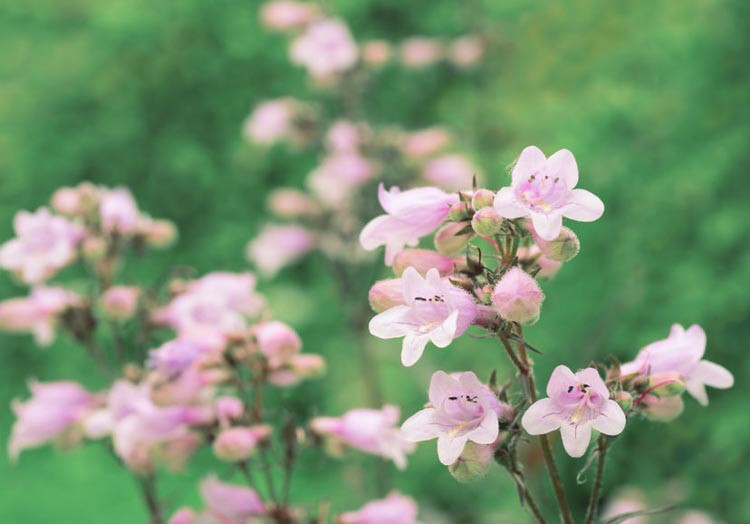Penstemon (Beardtongue)
Penstemon, commonly known as beardtongue, encompasses a diverse group of plants, displaying a wide array of vibrant colors and forms that enrich gardens with their unique beauty and resilient nature.
Habit: Penstemons exhibit an upright growth habit, with heights ranging from petite, low-growing varieties barely reaching a foot, to tall species that can grow up to 6 feet (180 cm). They possess lance-shaped, sometimes glossy leaves that can be evergreen or deciduous, depending on the species. Their erect stems support tubular, bell-shaped flowers arranged in panicles or racemes and give the plant a spiky appearance, adding vertical elements to the landscapes.
Hardiness: The hardiness of penstemons varies significantly among species, but most are incredibly resilient. They are generally suitable for USDA Hardiness Zones 4-9, with some varieties capable of thriving even in Zone 3 or as high as Zone 10. Penstemons prefer well-draining soil to prevent root rot and can often handle rocky or sandy ground.
Flowers and Bloom Time: Penstemon flowers are recognized for their striking tubular form, often with a flared lip resembling a trumpet. Colors span a broad spectrum, from vivid reds, pinks, and purples to softer blues, whites, and yellows. The bloom time, depending on the species and climate, typically ranges from late spring to early fall, with some varieties offering extended periods of flowering.
Uses: Beyond their ornamental appeal, penstemons are integral to native planting schemes and xeriscaping due to their drought tolerance. They’re ideal for borders, cottage gardens, and naturalistic plantings. Smaller varieties are well-suited for containers or front-of-border spots, while taller types are excellent as backdrops or in mixed perennial beds.
Benefits: Environmental benefits are profound, as penstemons are a nectar-rich food source for hummingbirds, bees, and other pollinators, thus supporting biodiversity. They’re also deer-resistant, making them a practical choice in many rural gardens. Their low maintenance and drought-resistant nature make them a sustainable choice, reducing the need for excessive watering or care.

